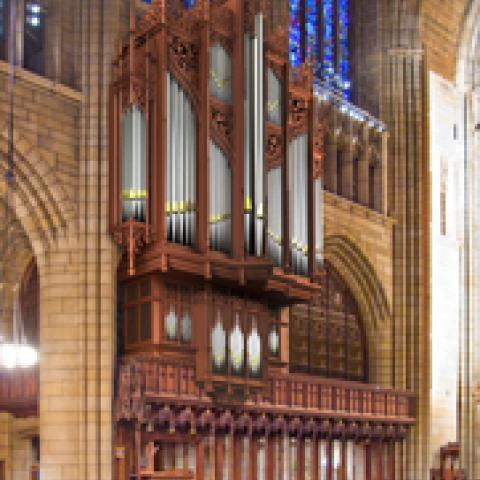Last November marked the 35th anniversary of the founding of Dobson Pipe Organ Builders, Ltd. Since that month in 1974, the firm has built new pipe organs for 89 clients, and has rebuilt or restored over two dozen existing organs.
To celebrate the milestone, the company has mounted an online exhibition of 35 years of Lynn Dobson’s drawings, which one can find at
www.dobsonorgan.com/dwg/home.html.
Dobson has received awards from the American Institute of Architects, the Interfaith Forum on Religion, Art & Architecture, and the National Association of Pastoral Musicians. Covering the whole of his career thus far, “Lynn A. Dobson: Drawings and Projects” includes conceptual sketches as well as finished presentation drawings for both built organs and projects that did not come to fruition.
The latest news of the company is available at www.dobsonorgan.com/home.html, including many photos of Op. 89, a three-manual, mechanical-action organ for the University of Tampa.
David Isele is UT’s composer-in-residence/professor of music and director of choral and vocal activities. He was joined last fall by colleague Haig Mardirosian, late of American University and newly named dean of UT’s College of Arts and Letters, where he oversees the departments of art, communication, English and writing, language and linguistics, music, philosophy, and speech, theatre and dance.
Dobson Pipe Organ Builders, Ltd. marks 35th anniversary
THE DIAPASON



